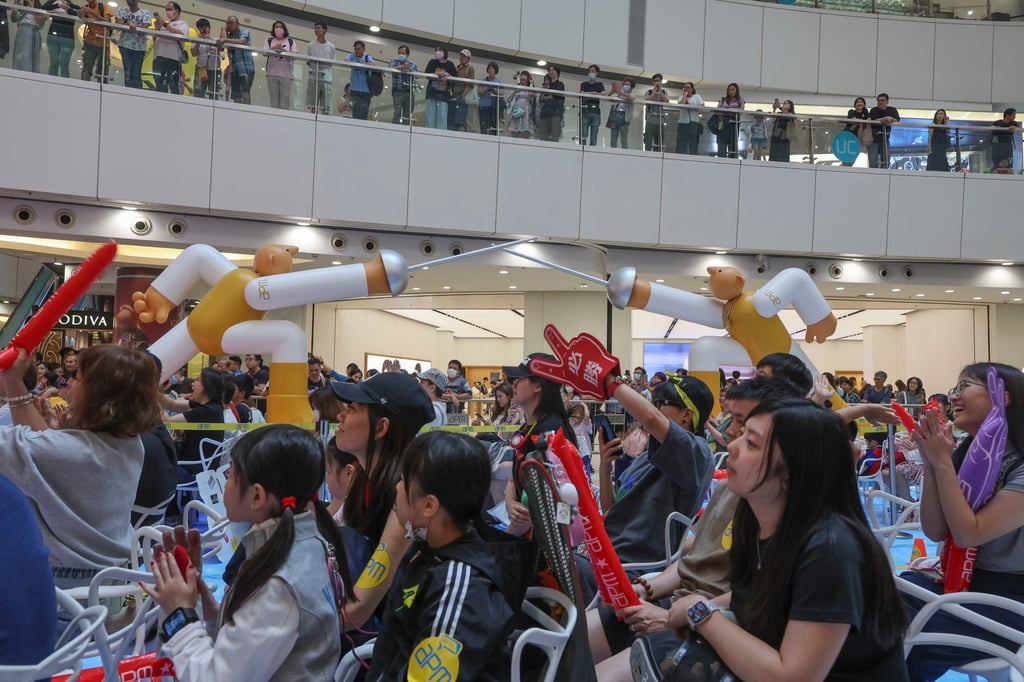The uptick comes at a time when the retail sector is contending with Hongkongers heading across the border for cheaper goods and services in cities such as Shenzhen.
Wong said that shopping centres with large open areas or atriums were better suited to hosting Olympic viewing parties and events, with such venues being the main beneficiaries amid the Games as smaller sites faced space limitations and the possibility of creating noise disturbances.
But he added that the time difference between Paris and Hong Kong had inevitably put a slight damper on the malls’ performance compared with the Tokyo Games.
A number of important matches during the Paris Games had taken place in the middle of the night when malls had closed, Wong explained.
While Henderson Land operated a similar fund for the Tokyo Olympics, Wong said it would focus on supporting local athletes “in a different way” with the launch of its “Breaking New Ground” drive this year.
The scheme will help to foster young athletes in the early stages of their careers and support those who are retiring from the profession.
“Since the Jockey Club has taken on the role of supporting those in the ‘present tense’, we are aiming for ‘past’ and ‘future tense’ … this way, the entire cycle is complete,” he said.
The programme will offer aspiring athletes scholarships and other opportunities to help them pursue their dreams and also get an education.
Wong also said it was important to cultivate sports within the community from a young age, similar to the arts, with the building up of an audience that appreciated and followed sports crucial to the sector’s success.
“Even if not everyone ends up becoming an athlete, having engaged fans is vital,” he added.
“Increasing public awareness and interest in different sports, even less popular ones, helps grow the audience and support for those sports.”
Wong said having an audience was key to helping the sector become more commercialised, turning it into a more self-sustaining entity that relied less on government funding.
On the retail front, Sino Group also said it had experienced a 20 per cent increase in foot traffic and a 15 per cent boost in business from a week earlier.
The company said it had invested more than HK$10 million into launching a “massive promotional campaign” involving shopping centres such as Olympian City, TMTplaza, Citywalk and One North.

The campaign included high-definition live broadcasts on the malls’ large screens, themed installations, decorations, consumption discounts, competitions and performances.
The Ng Teng Fong Charitable Foundation, which is linked to the company’s founder, also got into the Olympic spirit and awarded HK$100,000 to each member of Team Hong Kong, including athletes, coaches, medical personnel and managers.
Over in Kwun Tong, foot traffic at APM shopping centre during the recent Games increased by 20 per cent and sales volume rose by 15 per cent compared with the Tokyo Olympics, according to Sun Hung Kai Properties.
The mall operator said foot traffic and sales volume increased by about 15 per cent and 10 per cent respectively compared with early July, before any Olympic broadcast events were held.

